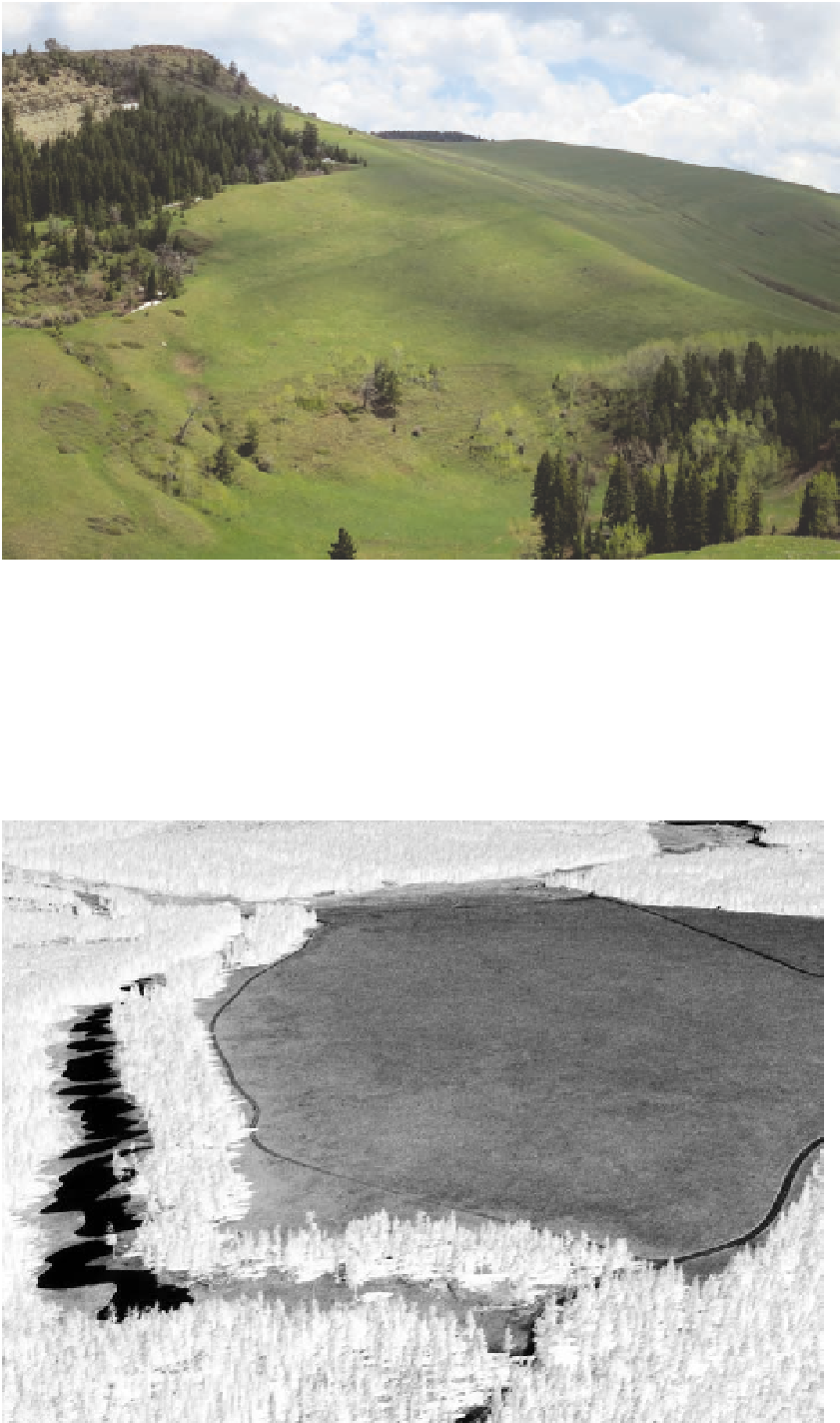Geoscience Reference
In-Depth Information
Fig. 13.2. Large mountain meadow in the Bighorn Moun-
tains, located where shales in the Gros Ventre Formation are
exposed. Shales lead to the development of fine-textured
soils that are not favorable for tree seedling establishment.
common plants in the meadow include fringed sagewort,
hoary balsamroot, idaho fescue, junegrass, prairie smoke,
silvery lupine, starry cerastium, wild geranium, and yarrow.
Aspen groves occur in the ravines. Forests here are dominated
by lodgepole pine and limber pine and are found on the
adjacent, coarse-textured soils derived from sandstones in
the Flathead Formation. Similar meadows exist where fine-
textured sedimentary rocks are exposed on the surface, such
as on the east slopes of the Wind River Mountains. elevation
7,4 0 0 f e e t .
Fig. 13.3. cinnabar Park, a
dry meadow in the Medicine
Bow Mountains, is located
on a high plateau. Strong
winds blow the snow off the
meadow, where it forms drifts
on the leeward side of the rib-
bon of lodgepole pine on the
left. often the snow persists
until August, preventing
small trees from becoming
established. canby bluegrass,
idaho fescue, junegrass, sheep
fescue, and starry cerastium
are common in the dry
meadow; tufted hairgrass and
other wet meadow species
are found in the snowglade.
elevation 9,600 feet.

Search WWH ::

Custom Search